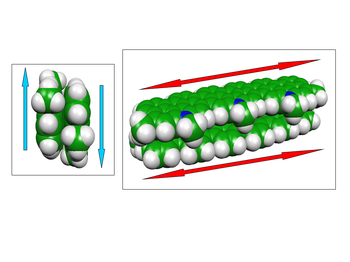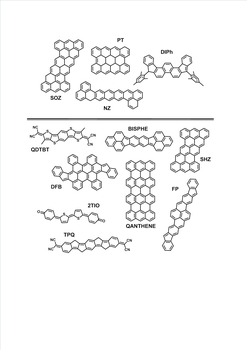
Among others, ambipolar organic semiconductors are emerging as interesting materials owing to their flexibility and their use in a variety of device architectures in different areas of organic electronics.

Graphene nanoribbons (GNRs), for which the width of the sheet is confined to be a finite size while the length is considered infinitely long, have attracted considerable interest due to their high potential for technological applications in nanoelectronics.

Besides light emitting diodes, photovoltaic devices, and field effect transistors, recently, conjugated organic materials displaying memory effects have received considerable attention.

Understanding the interplay between intramolecular and intermolecular contributions to the charge carrier propagation in organic semiconductors may guide the design of more efficient architectures.

Molecular aggregates have unique properties. Among others they display new spectroscopical features due to the formation of H or J aggregates.

Diradical and multiradical systems are of great current interest because of their unique structural features and conceptual value.
In adition, these systems have potential applications in thermoelectric generators, non-linear optical properties, ambipolar semiconductors and spintronics.